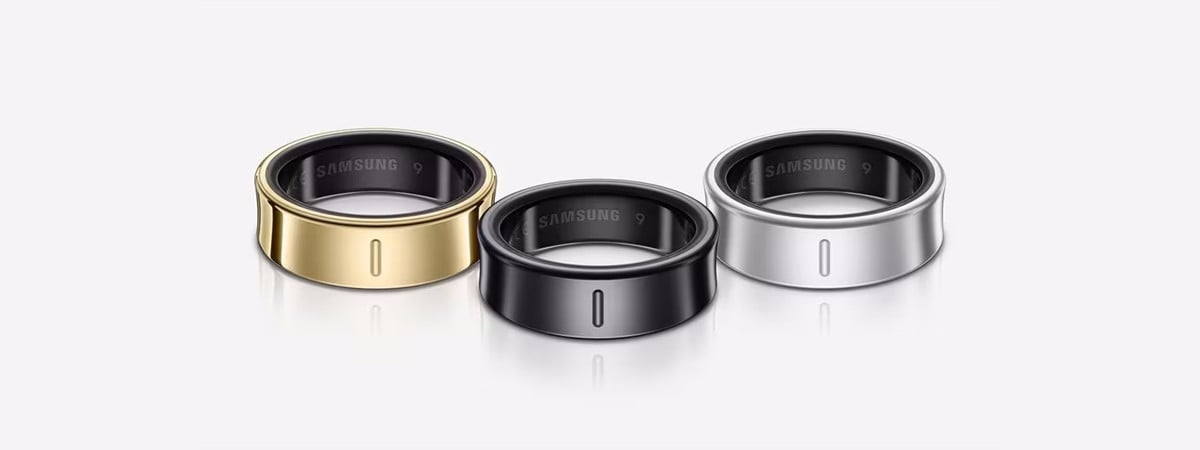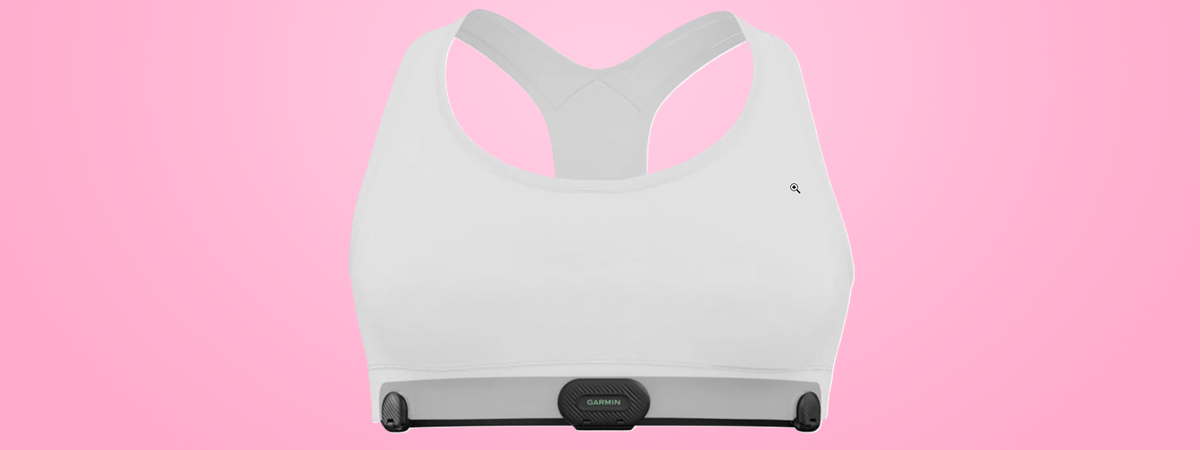
At CES 2024, Garmin announced two devices for women, prioritizing comfort and wearability. One is a chest strap named Garmin HRM-Fit that works with sports bras. This device is compatible with several Garmin smartwatches, cycling computers, and various fitness equipment, appealing to women who are serious about intense sports activities. If you’re curious about this device and what it can do, read this review:
Garmin HRM-Fit: Who is it good for?
The Garmin HRM-Fit is a great choice for:
- Women who need detailed heart monitoring during intense activities such as running or cycling
- Users of Garmin smartwatches compatible with the ANT+ protocol
Pros and cons
Here are the things I like about the Garmin HRM-Fit:
- Easy to clip on most sports bras
- Comfortable to wear during physical activities
- It offers extensive heart rate monitoring data
- One-year battery life
As for downsides:
- It is expensive
- To get the most out of it, you need to pair it with a limited list of Garmin smartwatches
Verdict
The Garmin HRM-Fit is a useful fitness tracker for women that is compatible with all kinds of fitness devices, as well as some Garmin smartwatches with ANT+ connectivity. This device is not for casual users who want to improve their overall fitness but mostly for women who are serious about doing high-intensity sports, like running or cycling, and want to have deep insight into their training and overall body fitness. Do you intend to run a marathon, an Ironman triathlon, or some other competition in which you need to be in your best physical condition? In that case, Garmin HRM-Fit will be a useful training companion that will help you on your journey. For women with simpler fitness goals, your usual smartwatch, like the Garmin Lily 2 Classic, launched with Garmin HRM-Fit, is more than enough.
Unboxing the Garmin HRM-Fit
Garmin HRM-Fit comes in a small gray cardboard box with a picture of the device and the product name on the top. Apart from the obvious branding elements, there’s little information printed on the box about the product you just bought. You have to open the box to find out more.
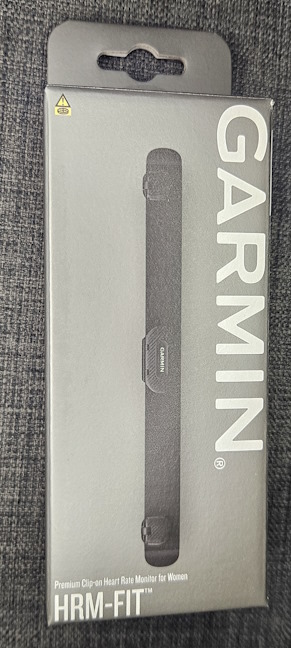
The packaging for Garmin HRM-Fit
Inside the box is the HRM-Fit, a leaflet with safety and product information, and a visual guide about how to wear this device, connect it to your smartphone, and wash and dry it. This leaflet contains useful information, and I recommend keeping it on hand.
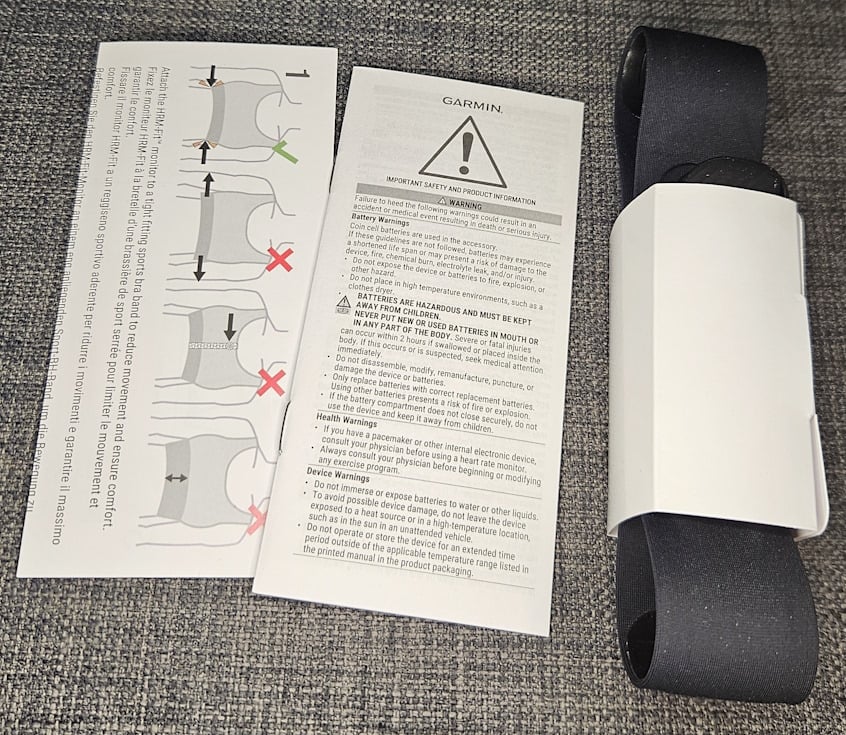
Everything you find inside the box
The unboxing experience for Garmin HRM-Fit is quick and simple. Inside the box, you find only the most important information you need for using this product, without any accessories or special packaging elements.
Design and hardware specifications
The Garmin HRM-Fit is a device you need to clip onto a sports bra. Its main purpose is to monitor your heart rate in real time and with an accuracy similar to that of medical devices. It is 33.5 x 3.3 x 1.7 cm or 13.2 x 1.3 x 0.7 inches in size and weighs just 53 grams or 1.9 oz.
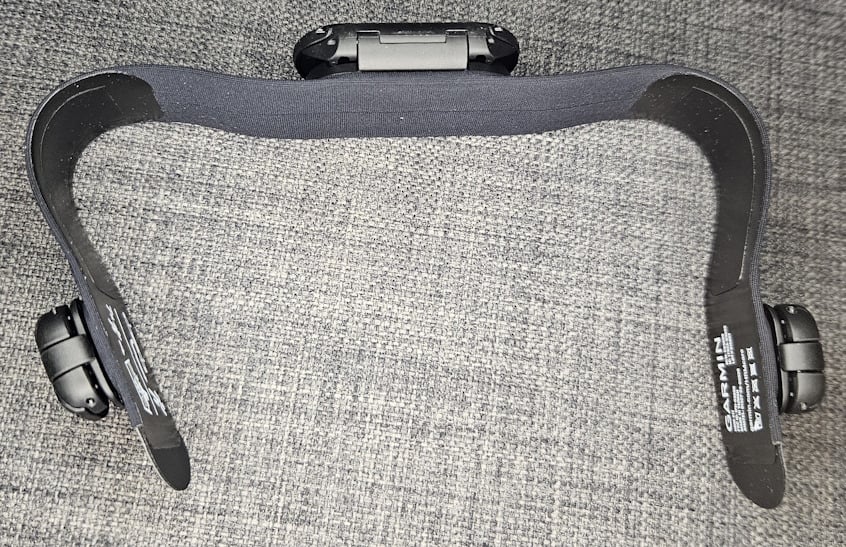
Garmin HRM-Fit
On the front of the strap, there are three clips: a larger one in the middle, where the Garmin logo is printed, and two smaller ones on the sides.

Notice the three clips on the front
Garmin HRM-Fit has two heart rate sensors on the back of the strap. They provide accurate heart rate data for various activities, including running, cycling, strength training, HIIT, and fitness exercises.

The sensors are on the back of the strap
To send this data to your smartphone, Garmin HRM-Fit works with both Bluetooth and the ANT+ protocol, and it can connect via Bluetooth to up to three devices. Even though the strap can connect via Bluetooth with any Garmin smartwatch, if you want access to all the data it can provide, you must use a compatible Garmin smartwatch that provides ANT+ connectivity. Then, you can pair the Garmin HRM-Fit to capture your running dynamics with more advanced training parameters: vertical oscillation, ground contact time balance, stride length, vertical ratio, and more.
The list of compatible smartwatches includes more expensive models aimed at professional users, like the Garmin Epix Pro (Gen 2) or the Forerunner 965. If you want access to such data, you must consult the HRM-Pro and Pro Plus Feature Compatibility before purchasing the Garmin HRM-Fit.
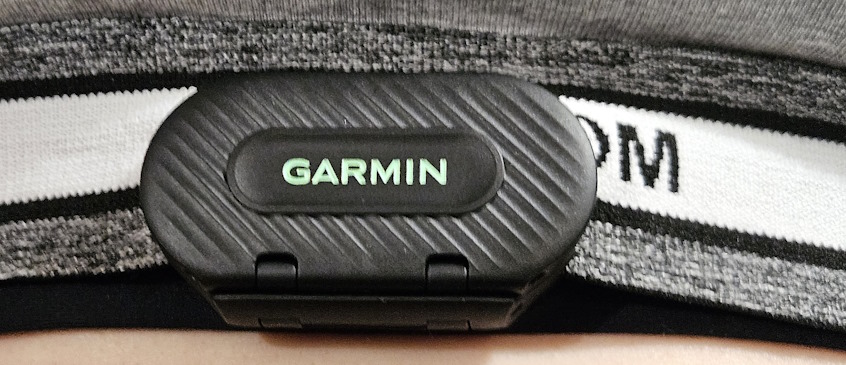
Notice the Garmin logo on the middle clip
Garmin HRM-Fit has a water resistance rating of 3 ATM, meaning that it can withstand sweat, splashes, rain, or snow, showering, and jumping into the water. However, it is not a good fit for swimming.
Inside the middle clip, you have the battery slot. Garmin HRM-Fit has a CR2023 battery, which is supposed to last up to a year if you use the device for an average of one hour per day. As you can see in the picture below, the battery can be removed and changed when it’s fully discharged.
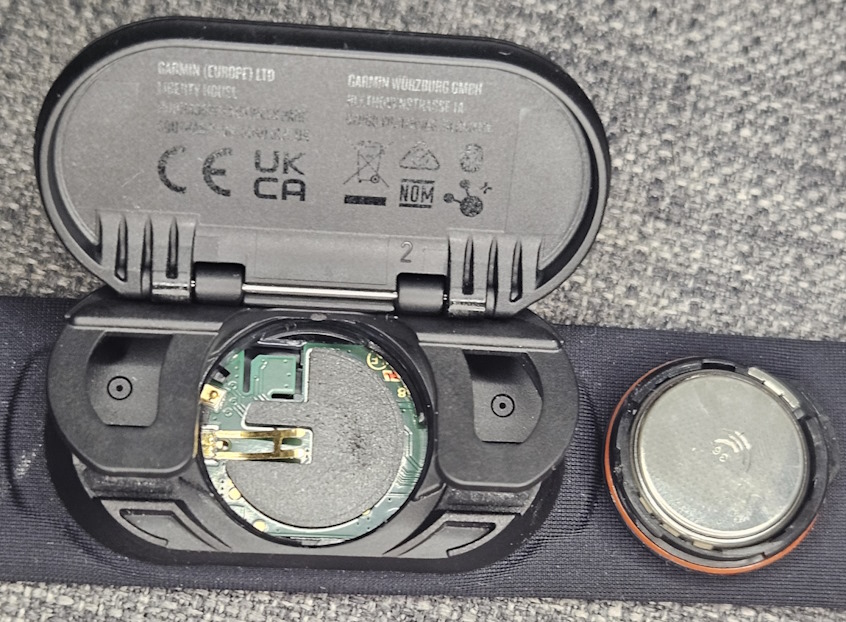
Garmin HRM-Fit uses a CR2023 battery
In terms of design and specs, the Garmin HRM-Fit looks like a specialized device that aims to be comfortable for women who do high-intensity sports like running or cycling and want detailed heart-rate data.
NOTE: For even more technical specifications and a comprehensive list of features, go to this page: Garmin HRM-Fit.
Wearing and using the Garmin HRM-Fit
Looking at the author’s name at the beginning of this review, it is obvious that I’m a man. Therefore, I couldn’t personally test this device. That’s why I asked my girlfriend to wear this band for a couple of days and do a few workouts with it. I collected her impressions, asked many questions, and looked at all the data sent by the strap to her smartphone. So, what I will share next is a mix between her experience and my observations.
One of the most important things to remember is that Garmin HRM-Fit requires you to wear a tight-fitting sports bra because the strap needs the sensors to sit directly on your skin to capture data accurately. The company says it works best with medium and high-support sports bras because your chest needs that support during high-intensity activities like running or cycling. This strap won’t work with bras that zip up in the front or have long or wide bands at the bottom. To secure the Garmin HRM-Fit on your sports bra, first start with the middle clip and then clip the two sides.
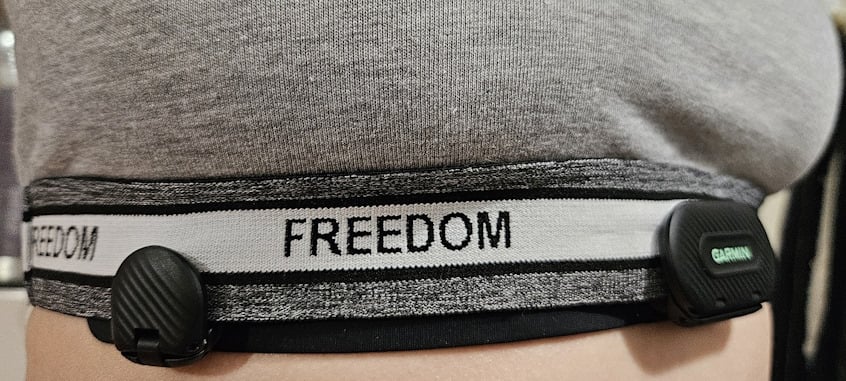
Attaching the Garmin HRM-Fit on a sports bra
You can then connect the HRM-Fit with the Garmin Connect app, which is free for Android and iOS. The app handles the pairing between your Garmin smartwatch and the HRM-Fit. One tip to remember is that the Garmin HRM-Fit sensors need to be slightly damp against the skin to send accurate measurements.
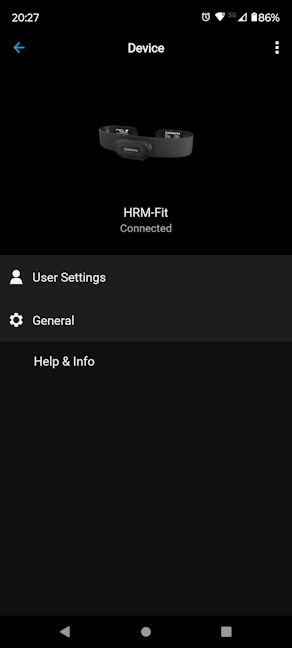
Garmin HRM-Fit connects with the Garmin Connect app on your phone
My girlfriend appreciated how comfortable it is to wear the Garmin HRM-Fit beneath her clothes during workouts and throughout the day. Her body got used to wearing it quite fast, and she soon forgot that she had it on. Comfort-wise, the HRM-Fit is a good companion when tracking a high-speed run or a cycling session.

Garmin HRM-Fit is comfortable to wear on your sports bra
One problem we had when testing the Garmin HRM-Fit was that we needed a Garmin smartwatch capable of connections through the ANT+ protocol. We only had the Garmin Lily 2 Classic, which we reviewed recently. Because of this, we couldn’t get any running dynamics data from the HRM-Fit. We can’t testify to how that looks and how useful it is for women who take running or cycling seriously. I want to use this occasion to reiterate that you also need to pay attention to the smartwatch you intend to use together with this strap. When using the Garmin HRM-Fit with a Garmin smartwatch, which can connect just through Bluetooth, you get only a detailed heart rate report, similar to an ECG. Even though we don’t have a medical device for comparison, the HRM-Fit readings looked accurate and slightly better than that measured by the usual smartwatches we have been testing recently.
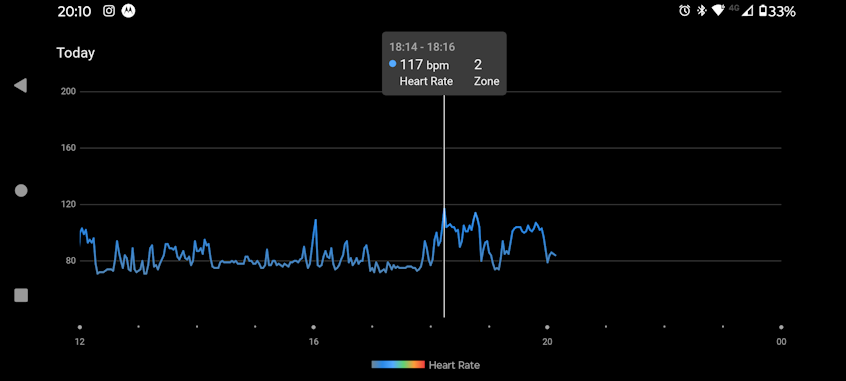
The Heart Rate report offered by Garmin HRM-Fit
What about when you’re not wearing your smartwatch, and you only have the Garmin HRM-Fit on you? In that case, the strap can also report the number of steps taken, calories burned, and minutes spent doing physically intense activities.
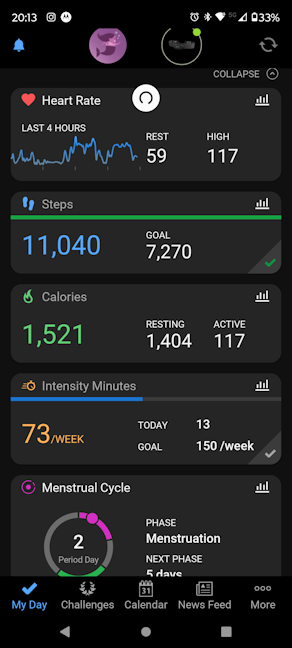
The data reported by Garmin HRM-Fit
Although it has some strict requirements regarding compatible smartwatches, Garmin HRM-Fit is a capable fitness tracker for women. It is comfortable to wear during exercises and provides useful heart rate data that is more precise than what traditional smartwatches can do.
Do you like the Garmin HRM-Fit?
This has been an unusual review for a unique device with an innovative design. Before closing, what do you think? Do you like the Garmin HRM-Fit? Do you consider it useful? Are the data it collects useful in reaching your sports and fitness goals? Comment using the options below, and share your perspective.


 05.02.2024
05.02.2024 
